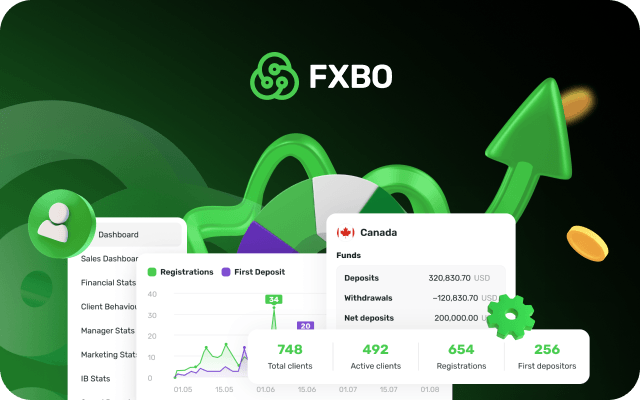Central bankers aren't typically known for shaking things up. Yet, when they start discussing digital currencies, even the most seasoned forex traders tune in. Welcome to the era of Central Bank Digital Currencies (CBDCs), a financial innovation rapidly reshaping global Forex markets.
Imagine central banks swapping dusty vaults of paper money for sleek digital wallets. It's akin to your grandma finally trading in her old landline for a smartphone; unusual at first, fascinating next, and eventually life-changing. Let’s explore how CBDCs will revolutionize forex trading.
First, What are Central Bank Digital Currencies (CBDCs)?
A CBDC is a digital form of a nation’s official currency, issued and regulated by its central bank. Unlike cryptocurrencies (Bitcoin, Ethereum), CBDCs are fully centralized and serve as legal tender that promises stability and regulatory control.
-
Issuer: Central bank (e.g., ECB, PBoC, RBI, Fed)
-
Legal Tender: Equivalent to physical cash
-
Access: Via banks or directly from the central bank
-
Key Features: Programmable, traceable, real-time settlement
-
Types:
-
Retail CBDCs: For public use, daily transactions
-
Wholesale CBDCs: For interbank and institutional settlements
Difference between CBDC and Cryptocurrency
Let’s clear up a popular misconception: CBDCs are not cryptocurrencies. They may both live on digital ledgers (blockchains), but their DNA couldn’t be more different.
-
Issuer: Central bank VS decentralized network
-
Backing: Fiat currency VS market confidence/code
-
Stability: Pegged 1:1 VS often volatile
-
Privacy: Compliance-focused VS pseudonymous
-
Purpose: National financial infrastructure VS decentralized alternative
-
Examples: e-CNY, Digital Euro, e‑Rupee VS Bitcoin, Ethereum, Solana
Major Global CBDC Initiatives (2025)
As of mid-2025, 137 countries, representing 98% of global GDP, are exploring CBDCs, with many more in advanced stages:
-
China’s Digital Yuan (e-CNY): Over 180 million wallets; ¥7 trillion transacted by 2024. Integrated for cross-border payments via mBridge.
-
India’s Digital Rupee (e₹): Value soared from ₹16 crore (2023) to ₹1,016 crore (2025). 17 banks involved, 6 million users, and RBI exploring programmable payments.
-
Europe’s Digital Euro: ECB targets late 2027/2028 launch, currently piloting wallet designs, risk management, and offline capabilities.
The Impact of CBDCs on Forex Trading
1-Instantaneous Settlement & Continuous Liquidity
-
Real-time settlement (T+0) eliminates the traditional two-day lag, drastically reducing counterparty and settlement risk. This means faster capital turnover and leaner collateral requirements.
-
24/7 market operation becomes feasible, removing downtime between sessions—forex markets can flow seamlessly around the clock.
2-Programmable Money Enables Precision Policy & Strategy
-
Central banks could embed programmable controls in CBDCs—like adjustable interest rates, regional spend limits, or time-based usage rules—allowing surgical macroprudential interventions.
-
This programmable layer turns forex into a dynamic system linked to policy cues in real-time.
3-New FX Pairs & Diversified Opportunities
-
With interoperable CBDCs, fresh FX pairs (e‑CNY/e₹, e‑EUR/e‑JPY) will emerge, enabling traders to bet on digital currency strength directly.
-
As stable, efficient corridors develop, traders can explore untapped currency routes with potentially lower transaction costs.
4-Redefined Collateral & Liquidity Structures
-
CBDCs become top-tier HQLAs; enhancing collateral quality in repo markets and tightening liquidity distribution.
-
Combined with programmable terms, this reshapes intra-day liquidity provisioning and FX hedging frameworks.
Risks & Challenges
1-Bank Disintermediation & Systemic Bank-Run Risk
-
If depositors shift balances from commercial banks to CBDC accounts, banks could face destabilizing withdrawals, shrinking credit supply.
-
Central banks will likely impose holding caps or tiered systems to mitigate “flight-to-safety” runs during stress.
2-Privacy Erosion & Surveillance Concerns
-
CBDC systems can provide detailed transaction trails, raising worries about excessive oversight, misuse, or political targeting.
-
Balancing transparency (for AML/CFT) with privacy—using pseudonymization or privacy-preserving technologies—will be legally and technically challenging.
3-Cybersecurity & Operational Fragility
-
CBDCs depend on robust infrastructure with built-in redundancies; a failure or breach in these systems could cause catastrophic disruption.
-
Attack vectors include DDoS, ledger tampering, and malware aimed at end-user wallets.
4-Regulatory Fragmentation & Interoperability Gaps
-
Without unified global standards, divergent protocols and compliance rules may fragment markets, creating friction and inefficiency.
-
Multilateral frameworks(like BIS mBridge or IMF XC)are vital for seamless cross-border CBDC operations.
5-Unintended Monetary Policy Consequences
-
CBDCs may amplify interest rate transmission but could also bind central banks to a zero lower bound in deflationary cycles.
-
Sudden capital flows into CBDC platforms could spike FX volatility or trigger rapid currency devaluation in developing markets.
6-Displacement of Private Banking & Innovation
-
CBDCs may disintermediate intermediaries, thus reducing fee income, data access, and credit generation capacity for commercial banks.
-
This can slow fintech innovation and limit financial services diversity.
7-Geopolitical Tensions & Strategic Exclusion
-
Nations leading CBDC tech (China, EU) could exclude others diplomatically or economically unless inclusive interoperable frameworks are created.
Recommendations for Forex Brokers in Navigating CBDCs
1-Educate and Stay Informed
-
Track central bank CBDC developments closely to anticipate market shifts.
2-Upgrade Trading Infrastructure
-
Ensure trading platforms and CRMs (such as FXBO) seamlessly integrate CBDCs.
-
Support instant settlement and regulatory compliance.
3-Flexible Risk Management
-
Adapt risk management strategies for novel digital currency risks.
-
Simulate scenarios, including rapid deposit shifts and volatility spikes.
4-Enhance Cybersecurity and Operational Integrity
-
Conduct regular security audits and maintain decentralized backups.
-
Invest in robust cybersecurity measures to protect client assets.
5-Provide Expert Advisory
-
Educate clients on CBDC market implications and offer robust hedging strategies.
-
Publish insightful, data-driven analyses regularly.
6-Engage in Global Standardization
-
Participate actively in global forums (BIS, SWIFT, IMF).
-
Collaborate with fintechs for interoperable solutions.
Final Thoughts
CBDCs aren’t just hypothetical anymore as they’re shaping up to be game-changers in the forex market, and traders who ignore them risk becoming obsolete faster than DVD rental stores. Smart brokers will see this wave coming and learn to surf it, rather than being swept away. Speaking of so, the smartest thing a forex broker can do is invest in a robust forex CRM. Now, have you used FXBO’s ISO-certified ultimate forex CRM? You can figure out its value yourself by requesting a free demo now!


